Click to watch or watch on YouTube
(the article below accompanies this video)
One of the most – possibly the most – jaw-dropping thing you can see in Tallinn, Estonia is Patarei Prison (a.k.a Patarei Sea Fortress) just outside the northwest corner of town on the Baltic coast. It’s a big, crumbling, dusty former Soviet prison, full of strange chambers full of rusty old equipment and long, cold hallways. It’s now decorated artfully but retains a palpable and unsafe sense of suffering and bizarreness.
Masayo and I visited Patarei today. It was definitely a highlight of our European excursion.
As for diabetes, my blood glucose was up and down thanks to some questionable decisions regarding Humalog. But on the culinary side the unusual day ended with a nice Azerbaijani meal; sometimes I say let high BG be, if you can experience a day this rewarding.
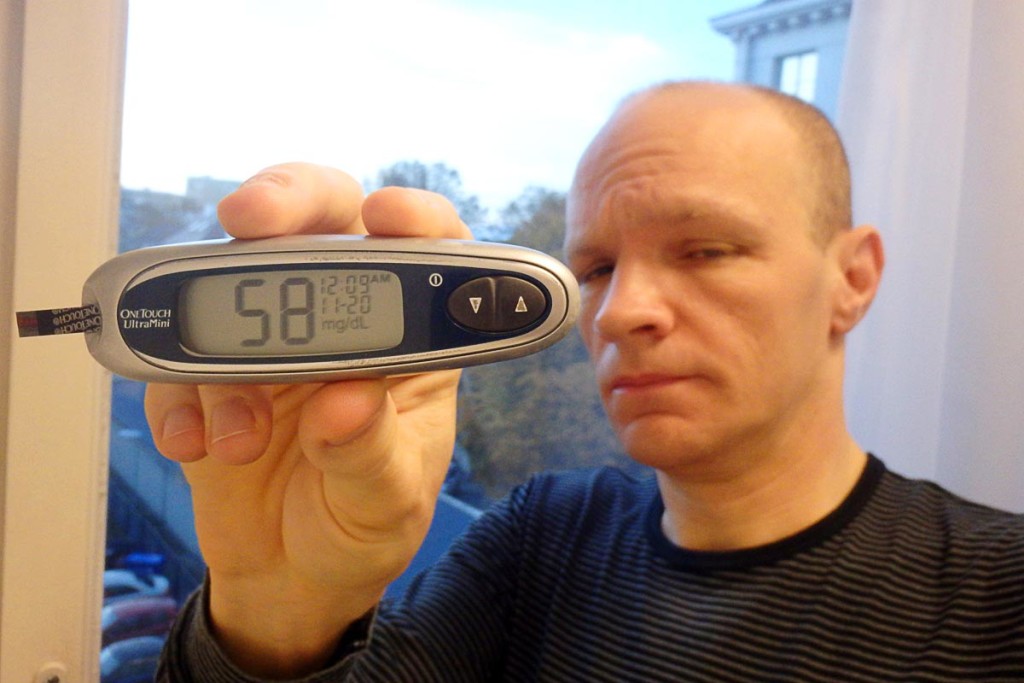
Breakfast: low and high BGs
My BG was 58 when I awoke this morning – and it felt like it. It must have been low for a while during the night; I felt drained.
After some juice Masayo and I went down to the breakfast buffet at Center Hotel. Worried about shooting up so soon after being low, I ate most of my food before taking Humalog for it. It’s perhaps an understandable instinct, but usually a bad idea.
Towards the end of the meal I checked to see if I was still low. Of course not; it was 278. It had only been an hour. Fixing lows is a skill unto itself; I did poorly this time. I shot up, right at the table
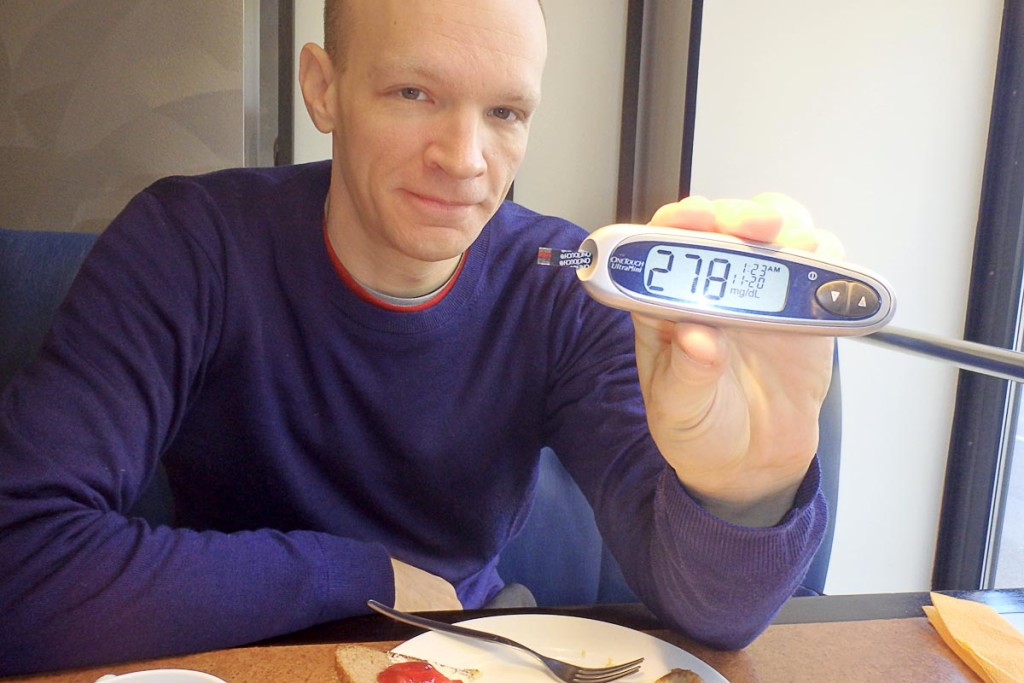
Cold weather clothes in Estonia
Today the high temperature was forecast to be -1ºC (about 30ºF). It was time to wear a large percentage of what I packed. I put seven layers on my upper body — two thin long-sleeve undershirts, two thicker cotton sweater-type shirts, a merino wool sweater, my button-up flannel, and my down jacket. On my legs, three layers: two long underwears and my Bluff Works pants. Plus, two pairs of socks… and my knit hat. Bring it on, Estonian winter!
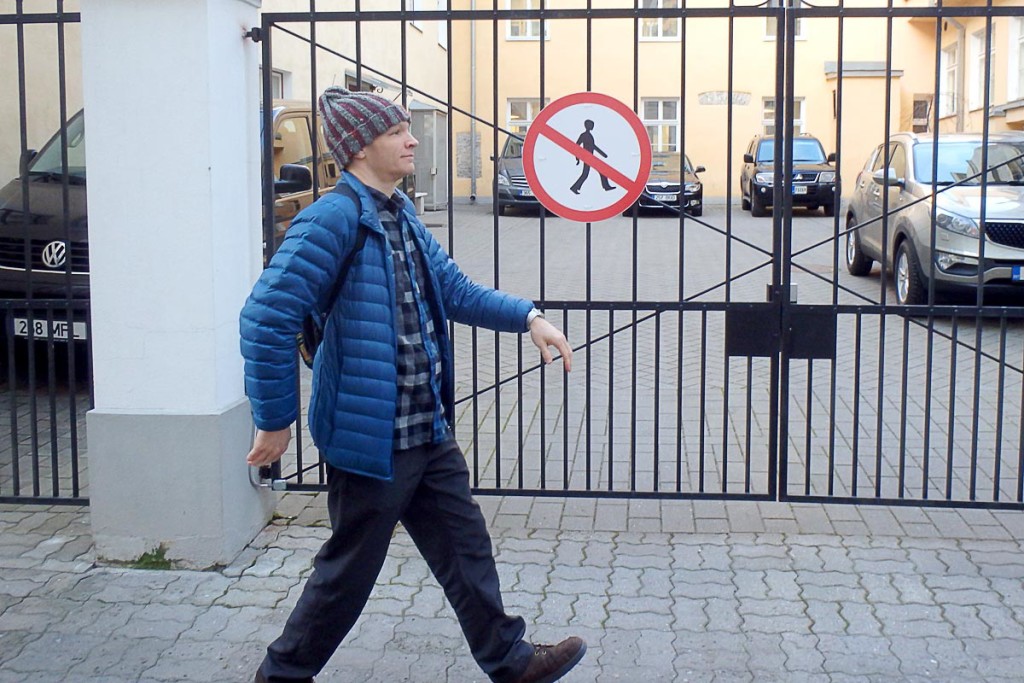
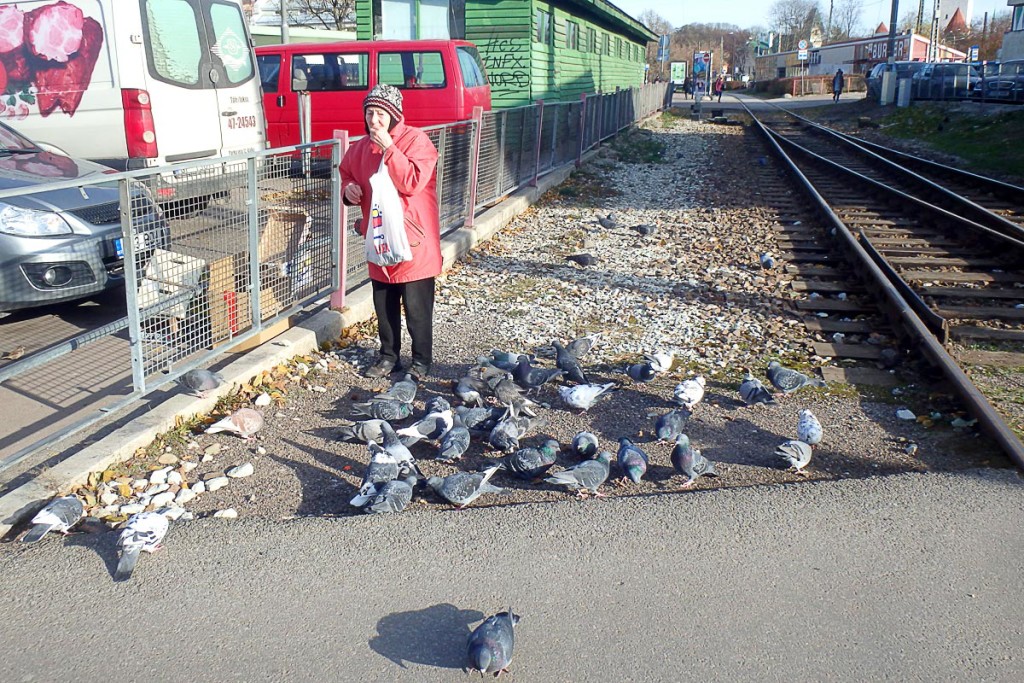
The Russian Market
On the way to Patarei Prison, we happened upon a Russian market near the train station. Older women bought and sold trinkets and household goods while everyone rubbed their gloved hands together and blew out clouds of steamy breath in the cold morning air.
The Russian Market was my kind of place — useful everyday goods, low prices, and a vibrant, bartering atmosphere. Everyone seems to speak Russian here, and the goods generally have Cyrillic writing on them.
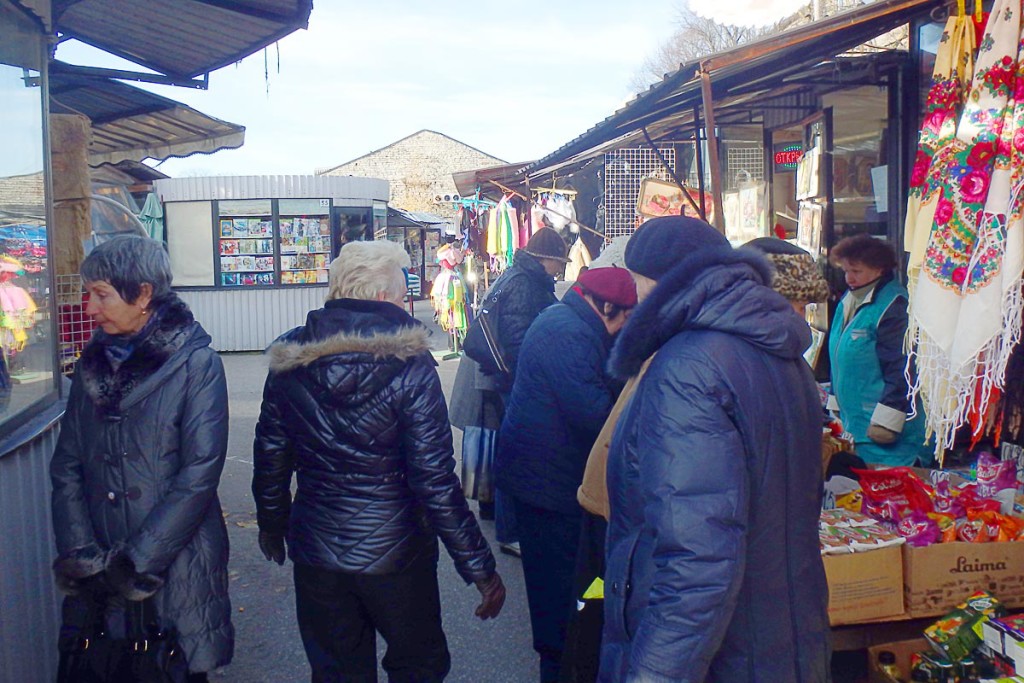
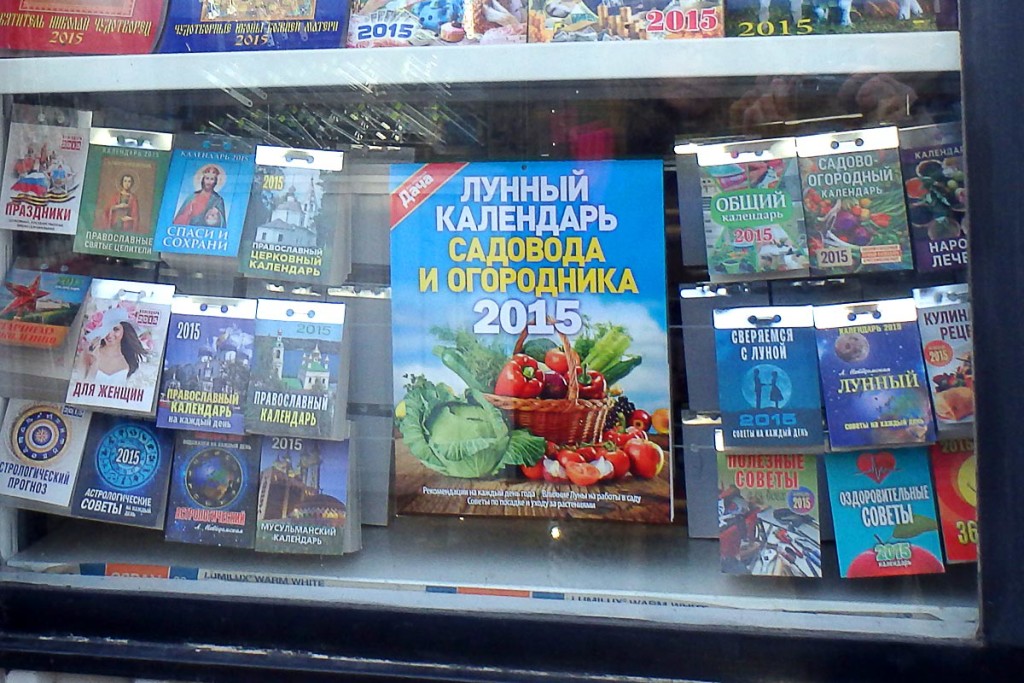
I bought a wristwatch by a company called Omax – several vendors had watches in the market, all the same and all priced at €5. I also wanted a pair of warm shoe pads marked €.70. I asked the lady if €5 total, watch and pads, was ok and after much drama and hemming and hawing, she accepted.
I like the watch, and I figure that if it lasts a month, that’s fine with me. At that price I could just buy a new one. It would be better than asking Masayo to check her phone for the time every thirty minutes.
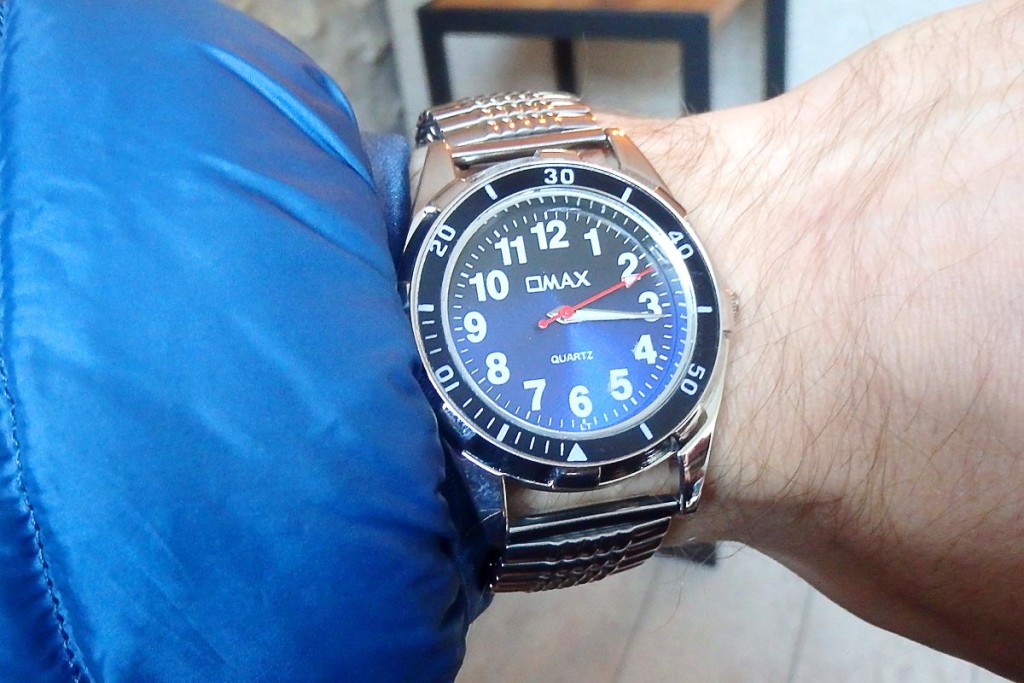
Update June 2016
The watch lasted through the entire European trip and stopped working a few months after returning to Japan. I just got around to replacing the battery yesterday and it’s working fine again. Not bad for a €5 timepiece from an obscure Russian market in Estonia!
We went inside a bustling little food market in the train station to look for a snack (not lunch — we were still full from the big breakfast buffet). I got a big cookie, and Masayo got a meat-stuffed roll, plus a bottle of water to share. Less than €1 each.
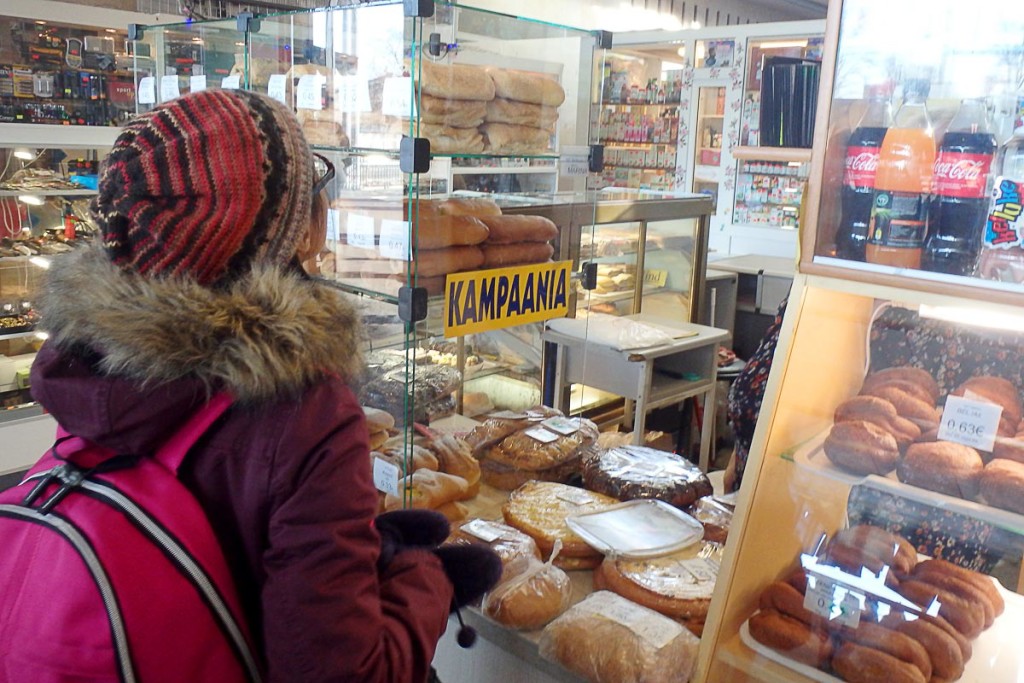
I stopped at a big gymnasium building to check my BG on the front steps. My fingers were so cold I very nearly failed to do it. But I took it slow and finally got my BG reading – after my breakfast Humalog nonsense, I was a perfect 96. On the steps I took some Humalog and ate my cookie as we walked on. My BG was good and Patarei Prison was getting closer!
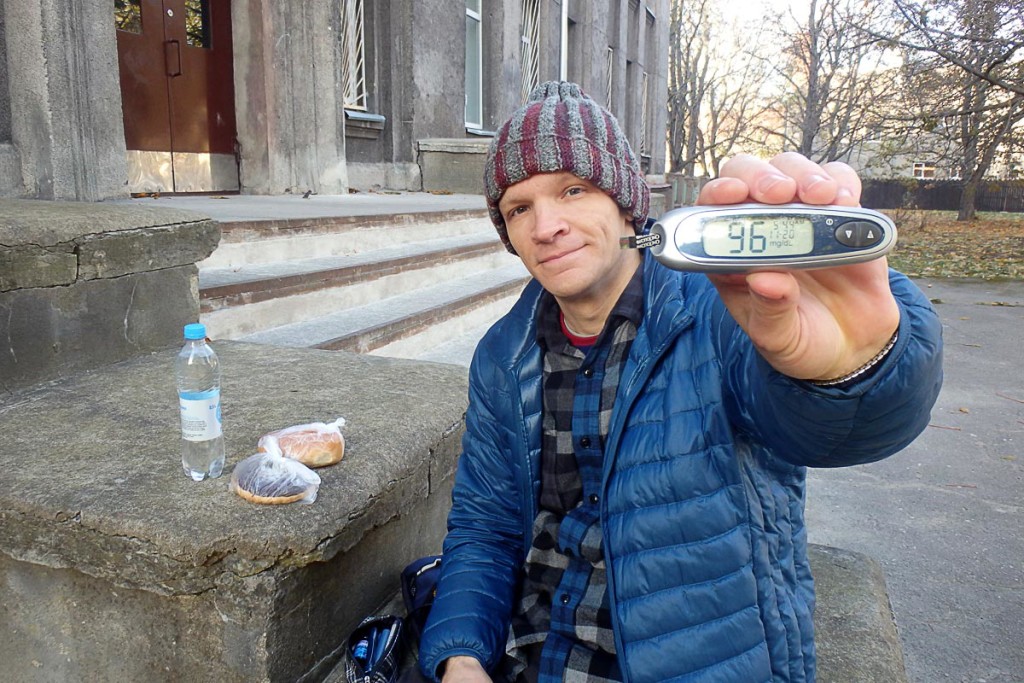
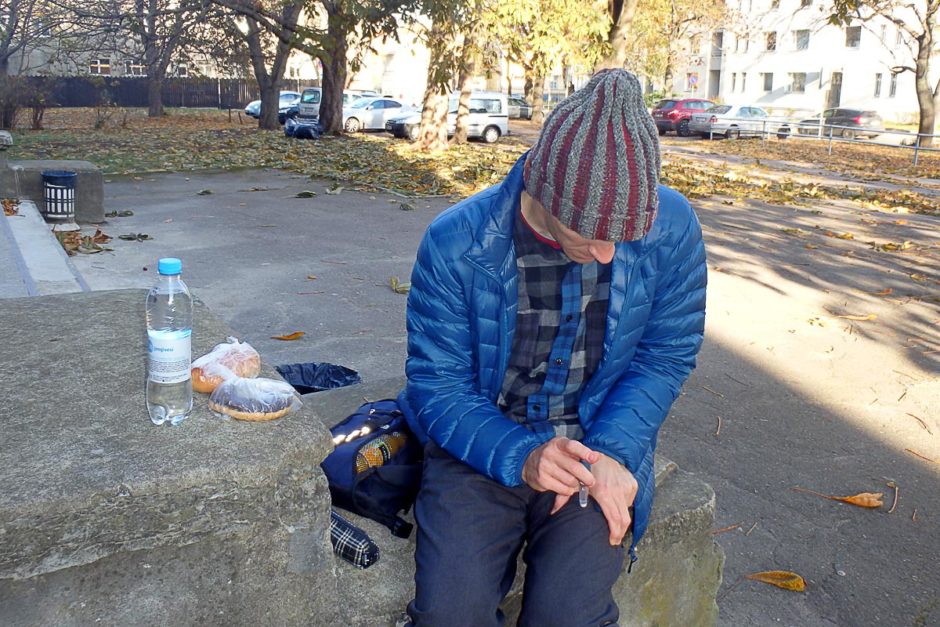
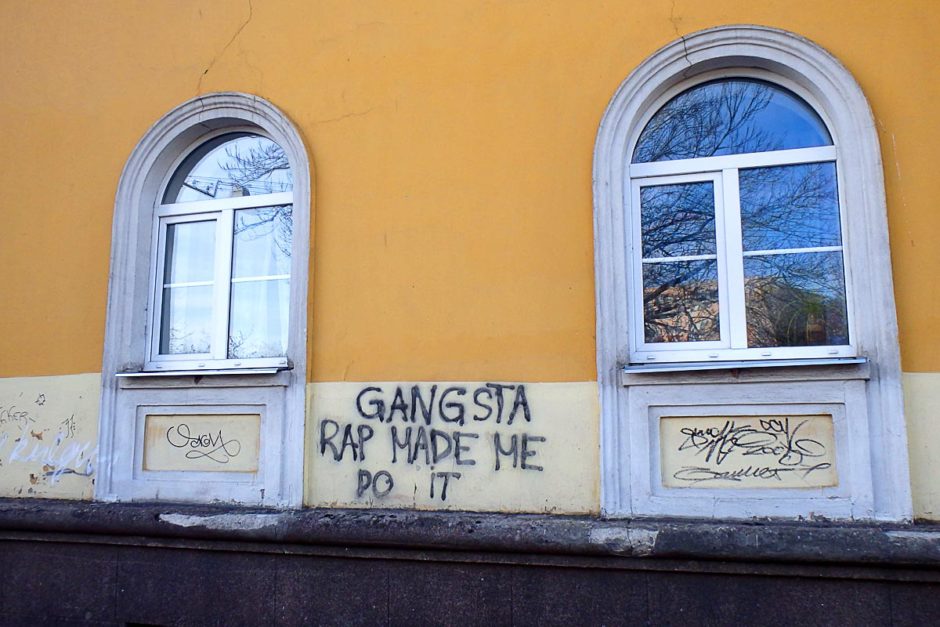
English graffiti on the way to Patarei.
Finally inside Patarei Prison
This Russian prison is hard to find good information about. Its status as a landmark seems to be up in the air; nobody knows if it will be kept as a cultural heritage place and developed into a proper museum, or condemned and demolished as a dangerous and unpleasant remnant of brutality.
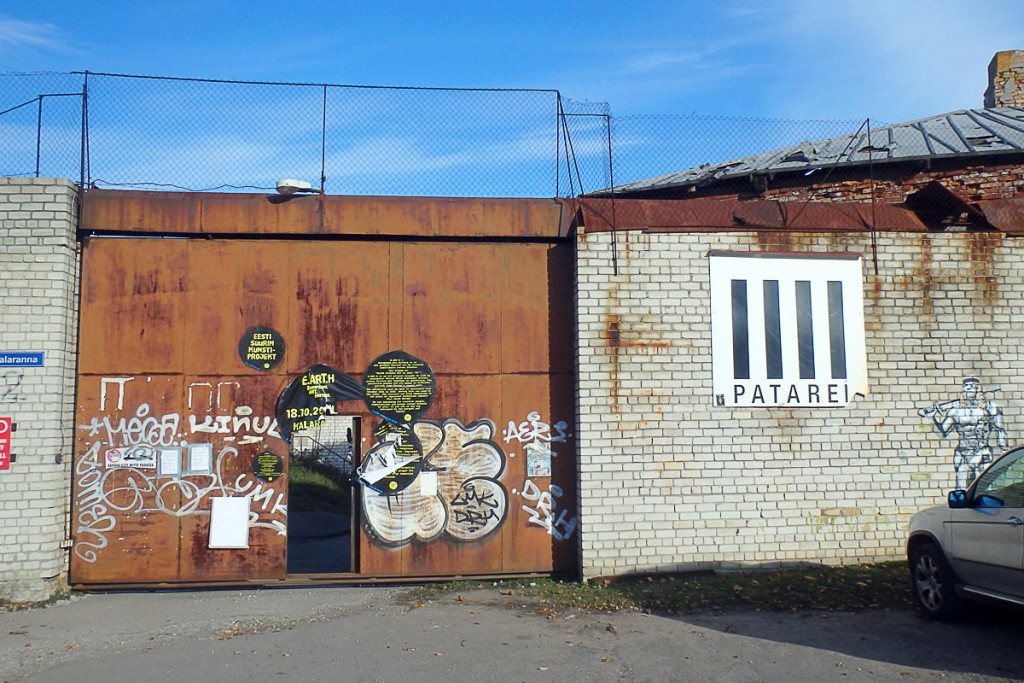
The outer entrance to Patarei prison. Inviting eh?
We were lucky to be there in the interim, when it was freaky and scary but accessible. (It was actually scheduled to be closed for the season by October, when we were there, but we gave it a shot and they were indeed open. By which I mean the old camping trailer that serves as the ticket booth was staffed. I don’t know how official any of Patarei is, but whatever; we were in.)
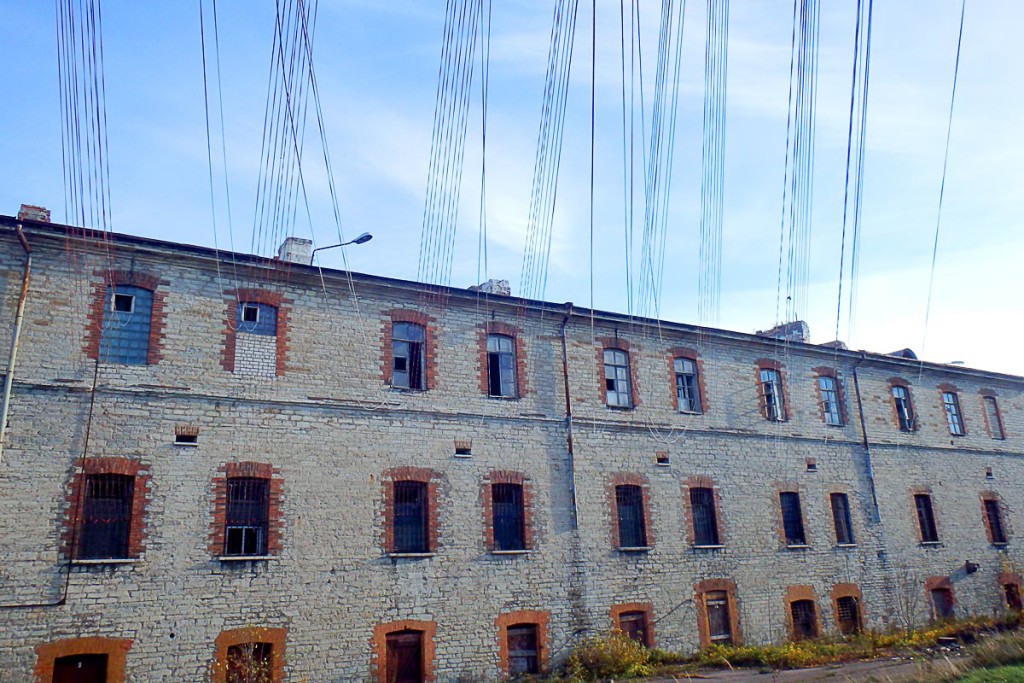
What seems true is that it held prisoners as recently as ten years ago (2004-5 ish), and has been decommissioned. But “abandoned” is more like it. The prison is decaying and crumbling, and appears to have been left as-is. Many of the cells and offices have been turned into strange art projects by some local artists; others haven’t yet.
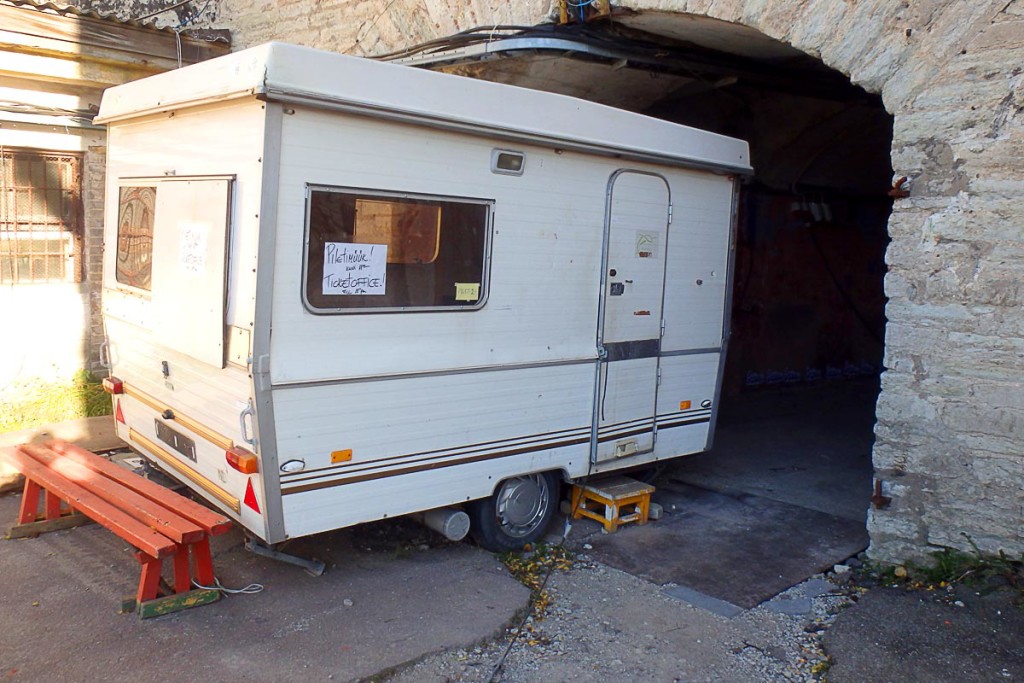
The unofficial-looking camping trailer that serves as the Patarei ticket office.
Nothing about the visit makes any sense. You give a lady in a camping trailer at the entrance €2 and walk in. Nothing is marked and there is no guide or explanation for anything; you just wander. Up stairs, from cell to cell, floor to floor, on the cold dusty concrete. Some rooms are packed with debris and are unlit. Others have rusting prisoner bunk beds with random junk thrown around and paint peeling all over. Nothing is off-limits. It can’t be safe.
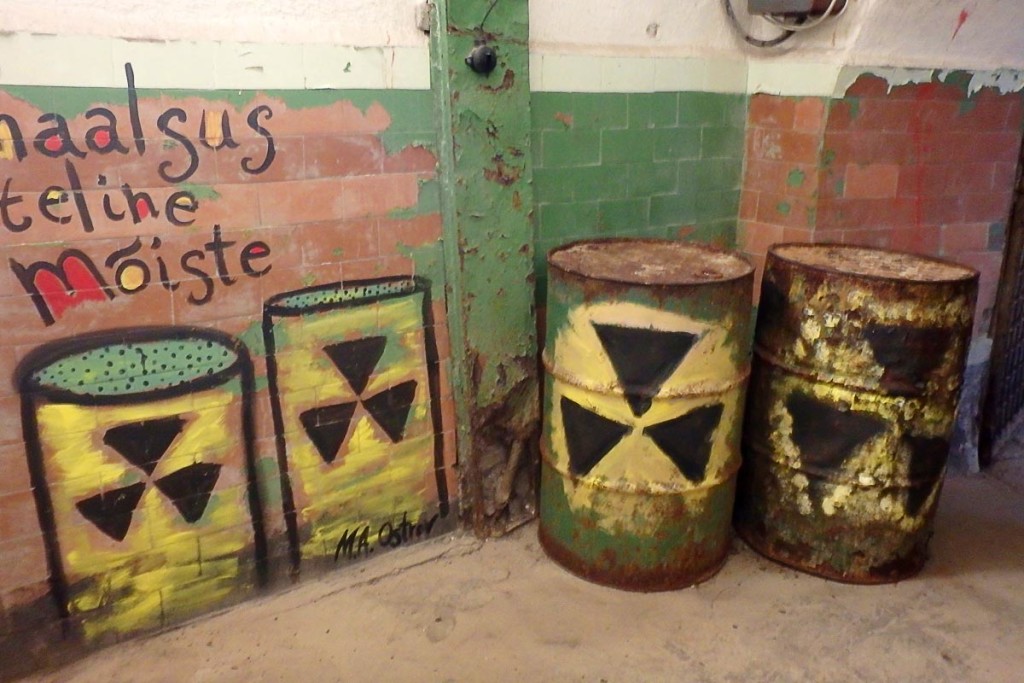
About my photos of Patarei Prison
I took many pictures at Patarei; around every corner and in every hallway and room was something amazing and photogenic. It was hard to choose which ones to put here on this page. I just selected some that may or may not be the best ones I took, but are hopefully representative of what I saw inside Patarei.
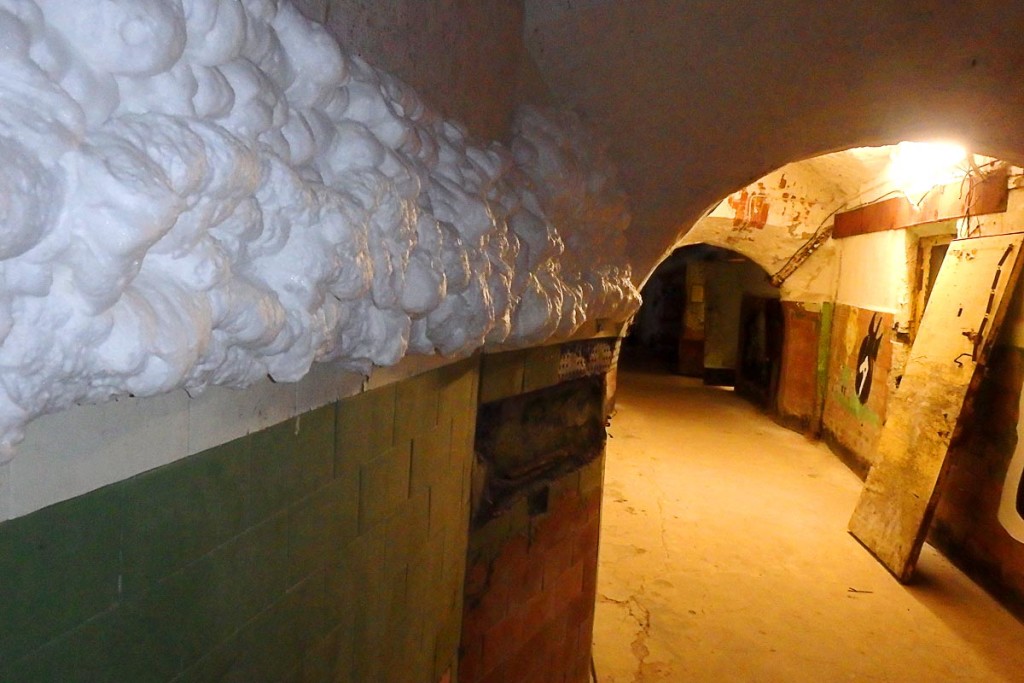
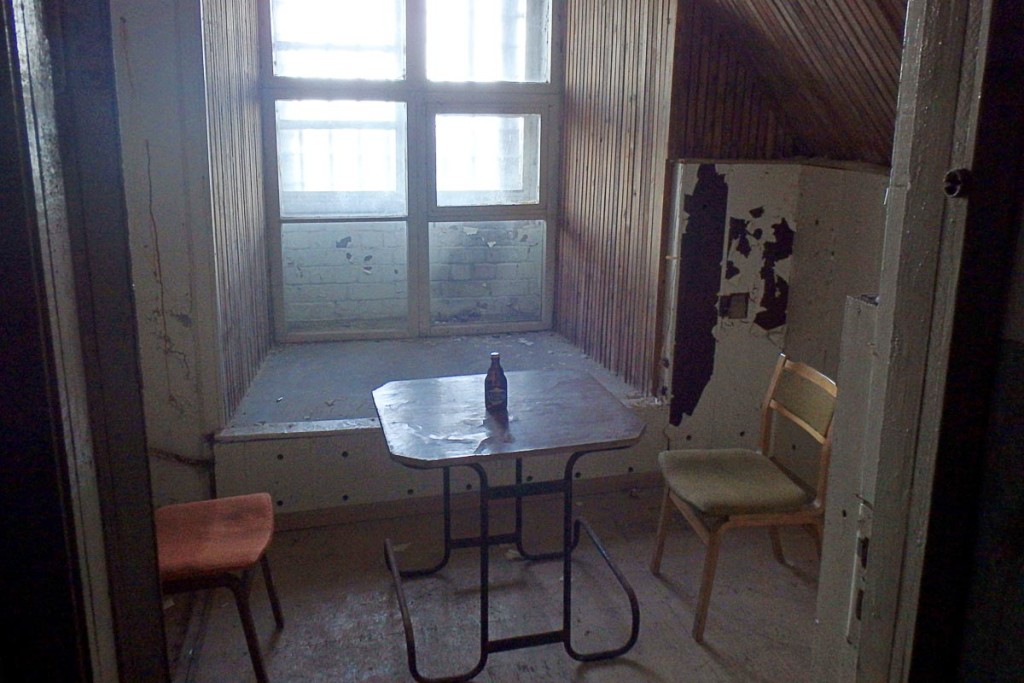
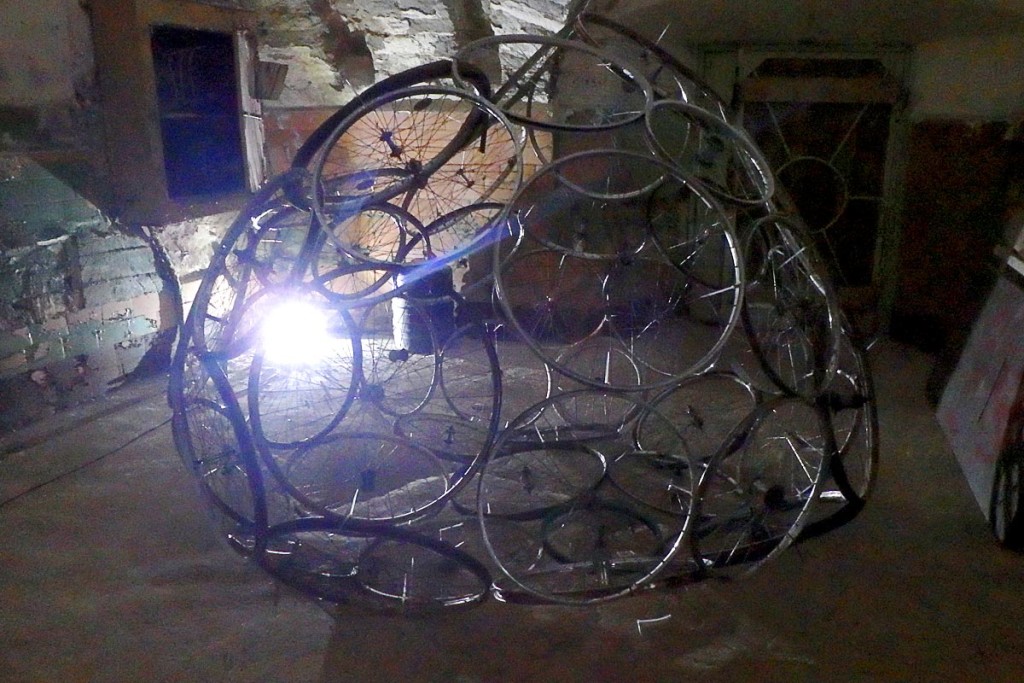
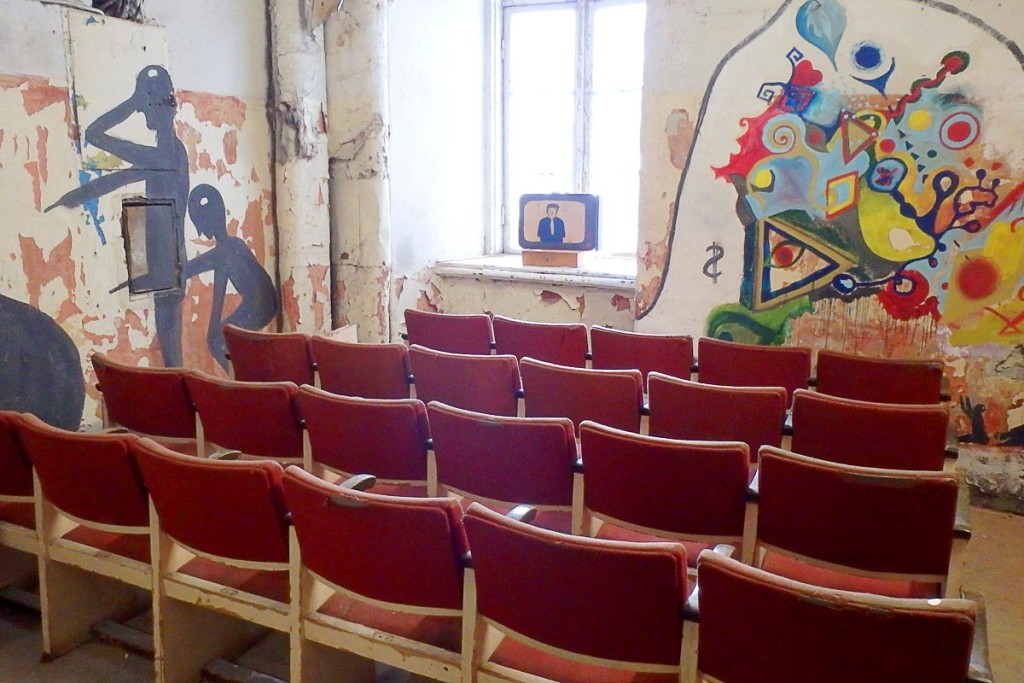
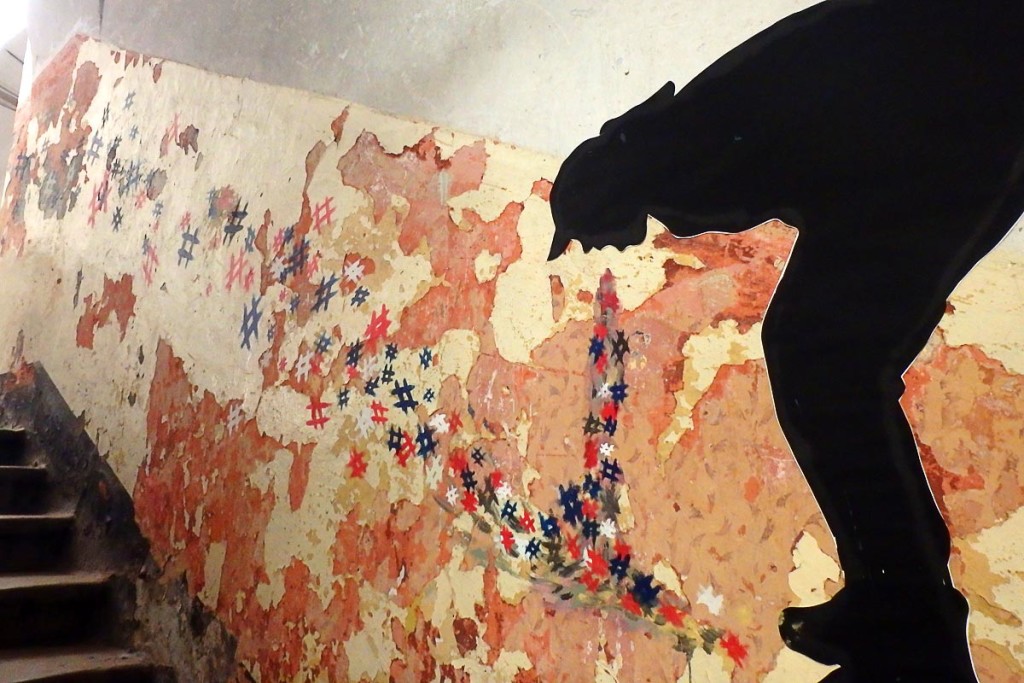
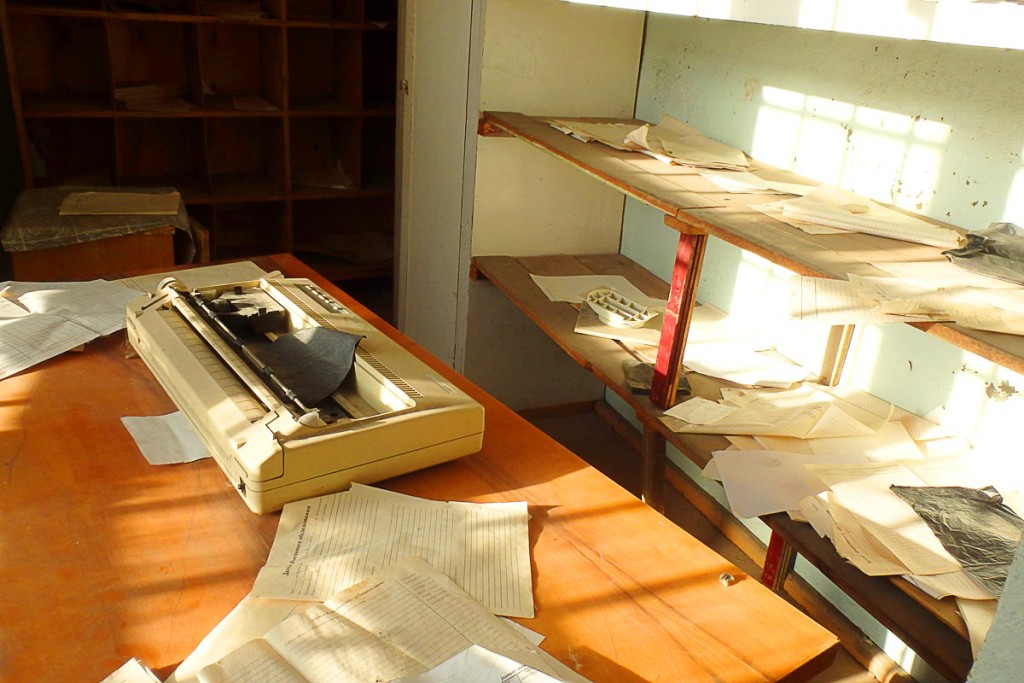
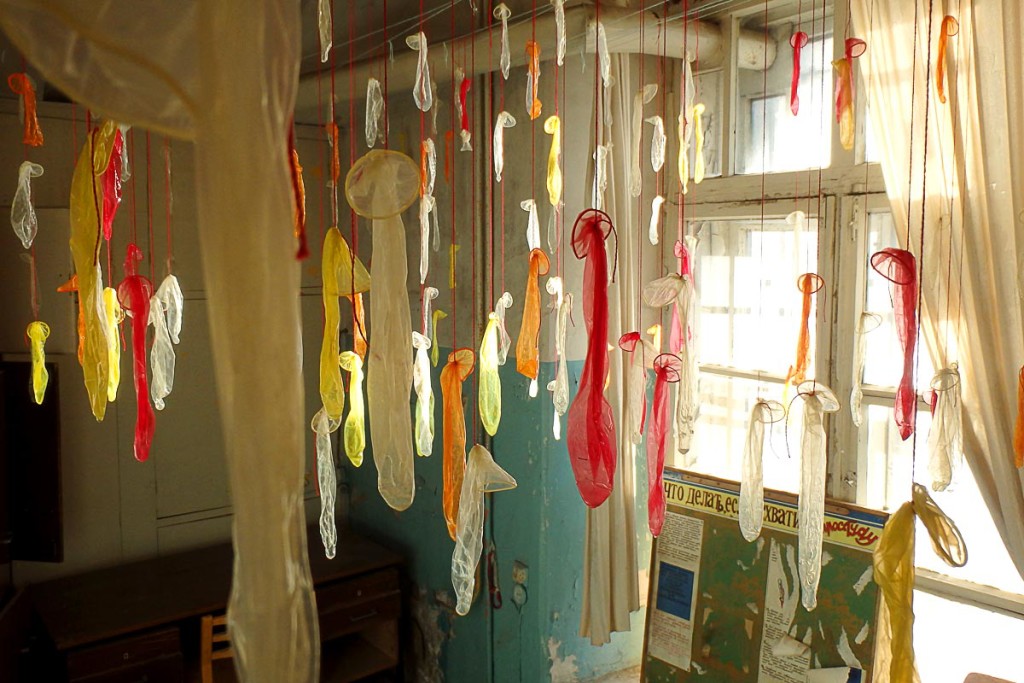
Things have been placed and altered in some areas in very impressionistic, artistic, and unexpected ways. A mangled Russian typewriter sits on a windowsill. One room is full of paper airplanes, suspended on wires leading towards the door where one enters; the floor is covered in paper boats in little rows. The prison medical rooms are packed with broken equipment, radioactive-looking vats and dark glass medicine bottles. Dozens of condoms hang from the ceiling in one room. Why? Is any of this stuff safe? What happened here?
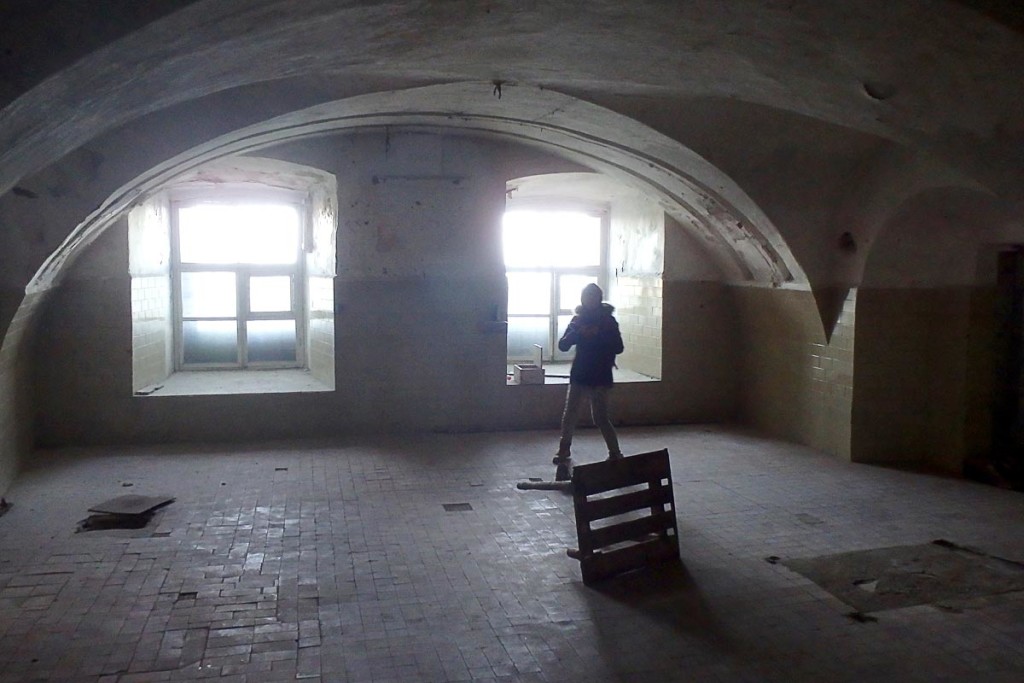
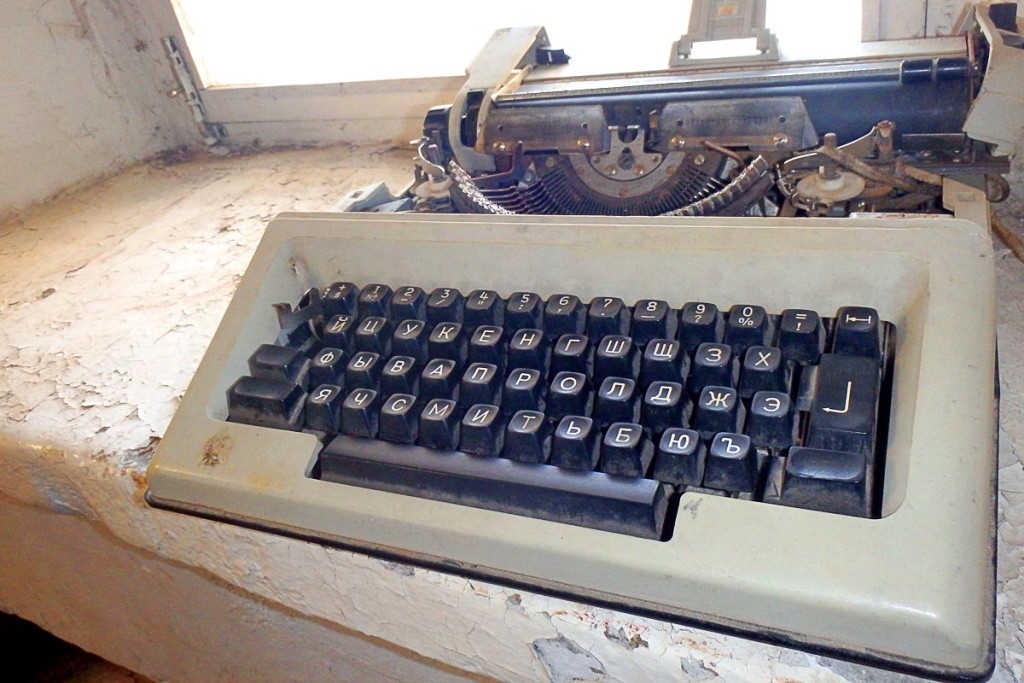
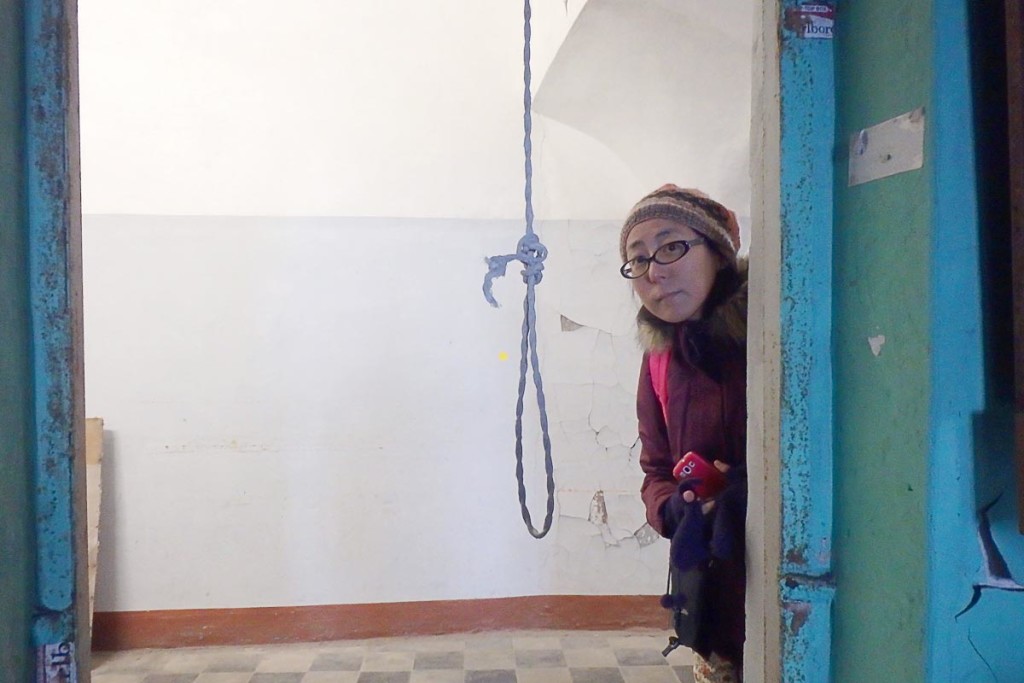
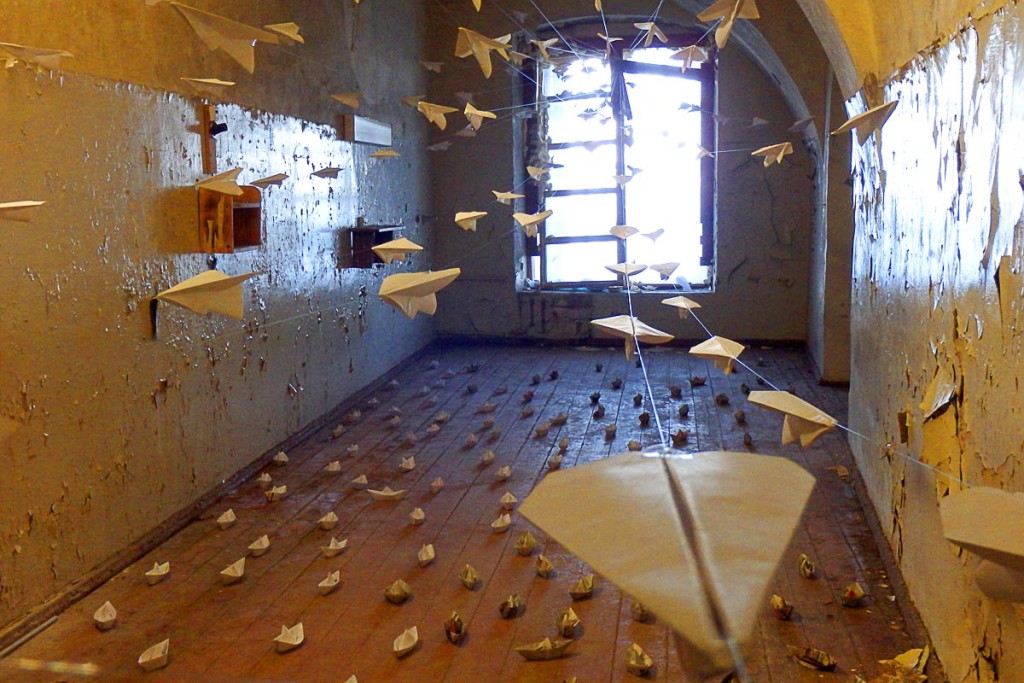

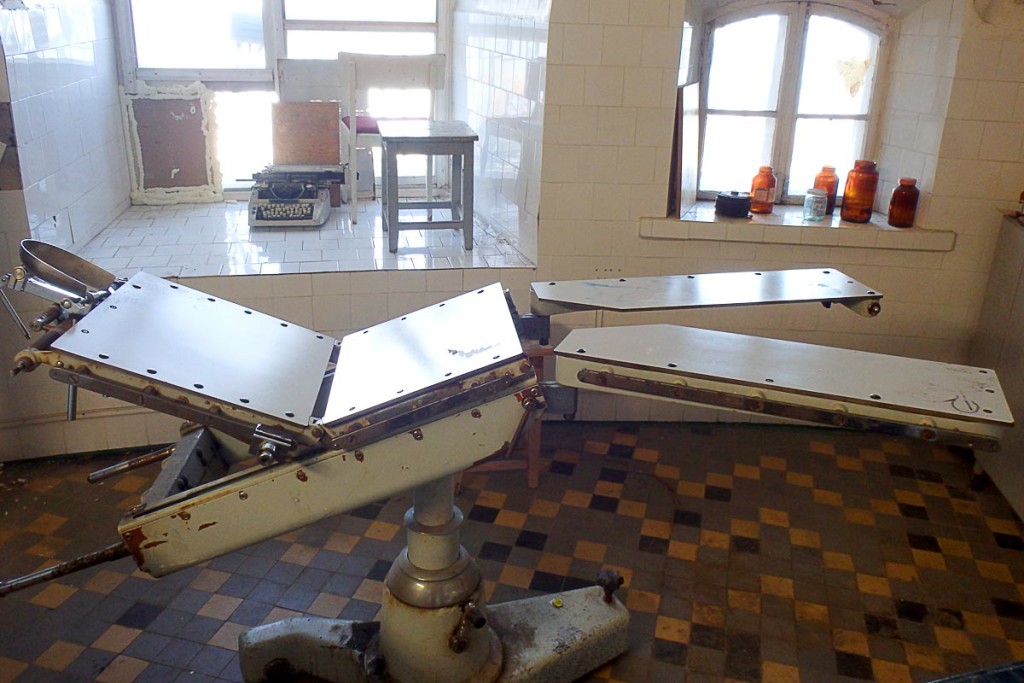
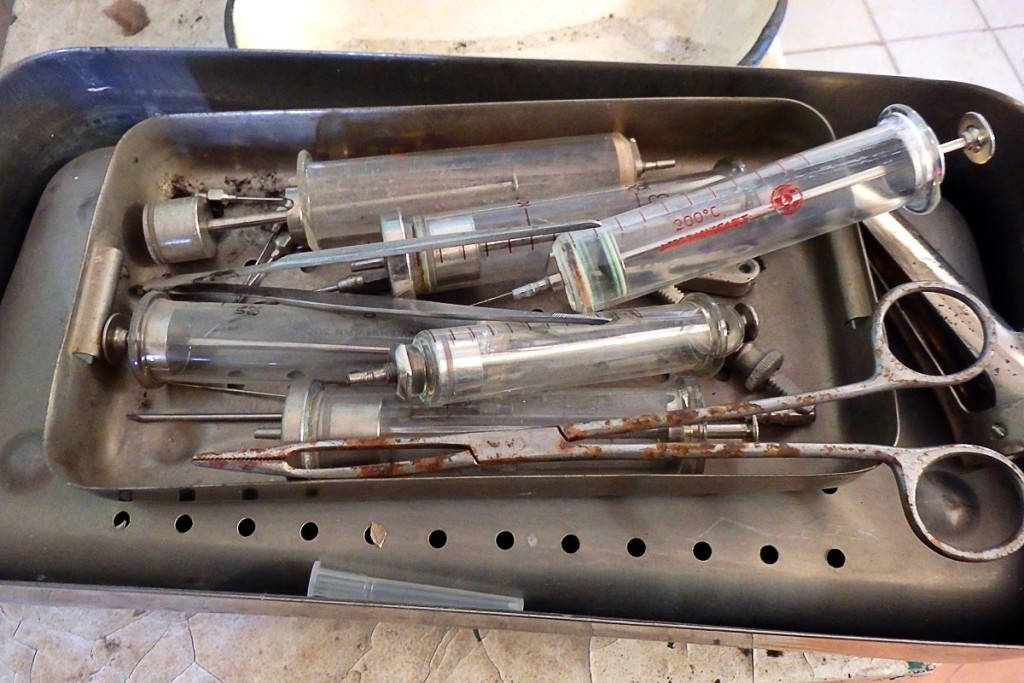
If I were a real adventurous diabetic, I’d take some insulin with one of these.
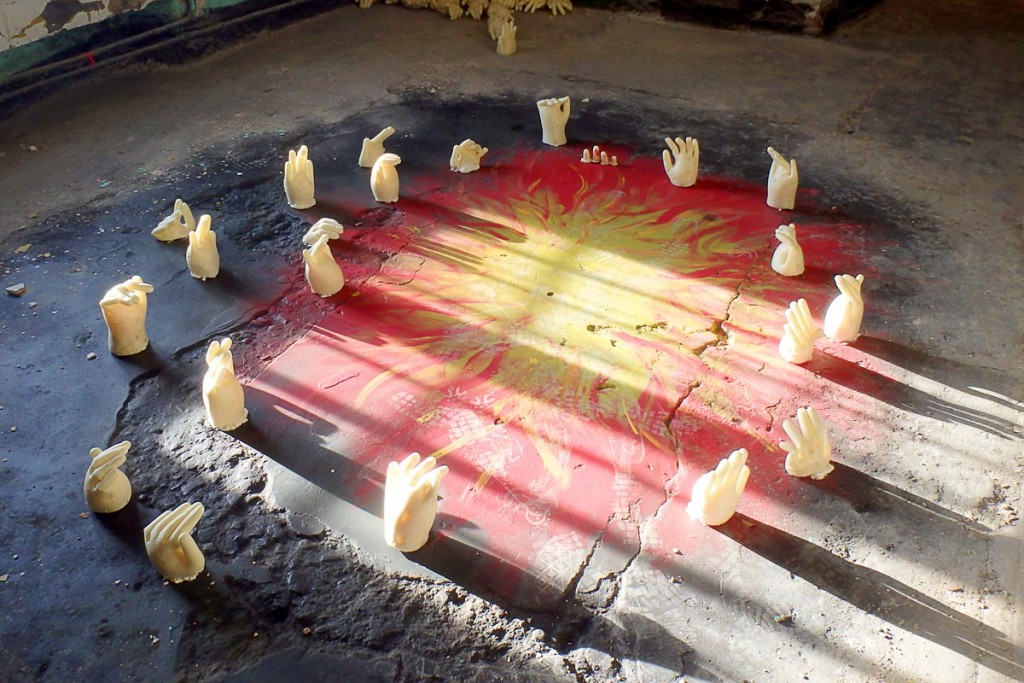
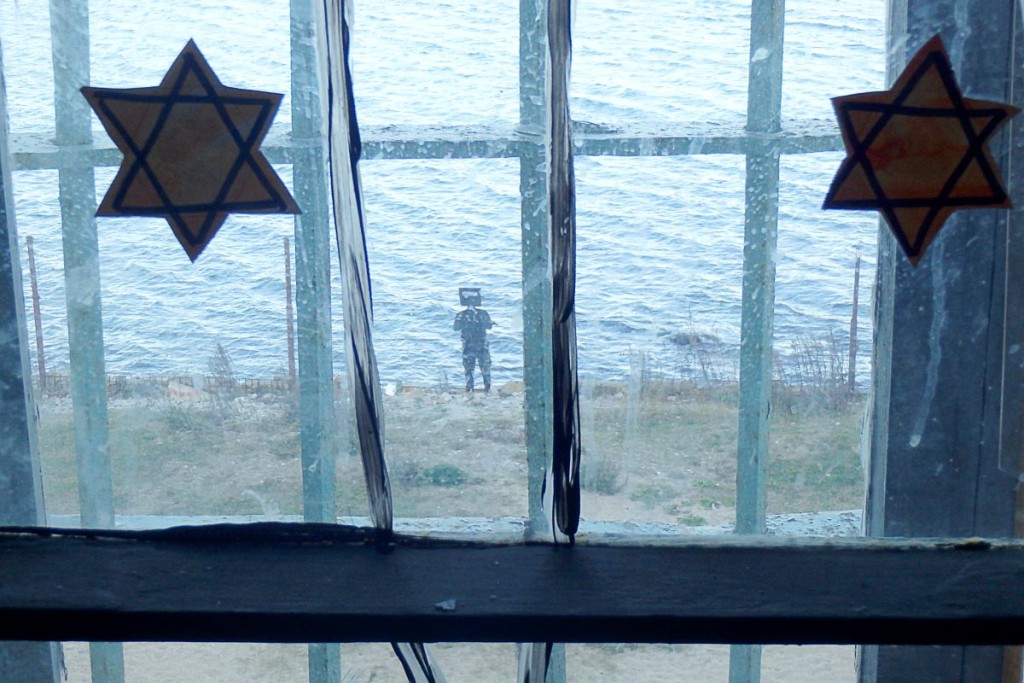
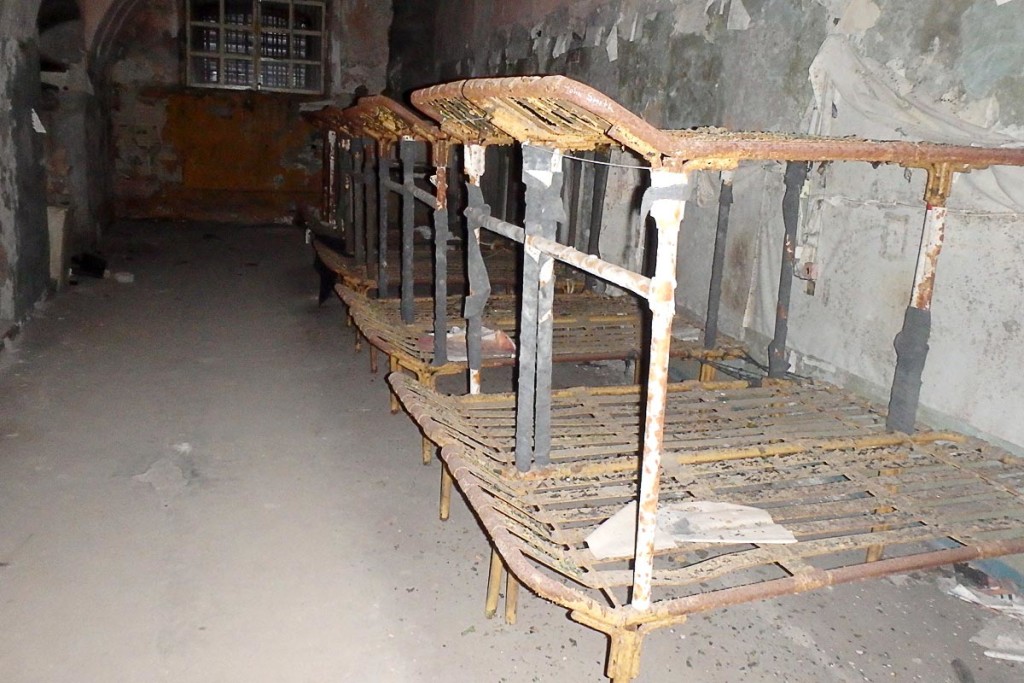
The prison is built in a sort of V-shape, and in the middle are exercise yards. Small cells, where prisoners could go for one hour a week (according to the internet) were covered in wire and watched over by a guard in a tower. Nobody is here now; you yourself can climb all over any of this.
It’s striking to think that Old Town Tallinn is just a 20-minute walk away from here. Old Town is well-preserved, stately, and beautiful; Patarei is gloomy, horrifying, and moribund.
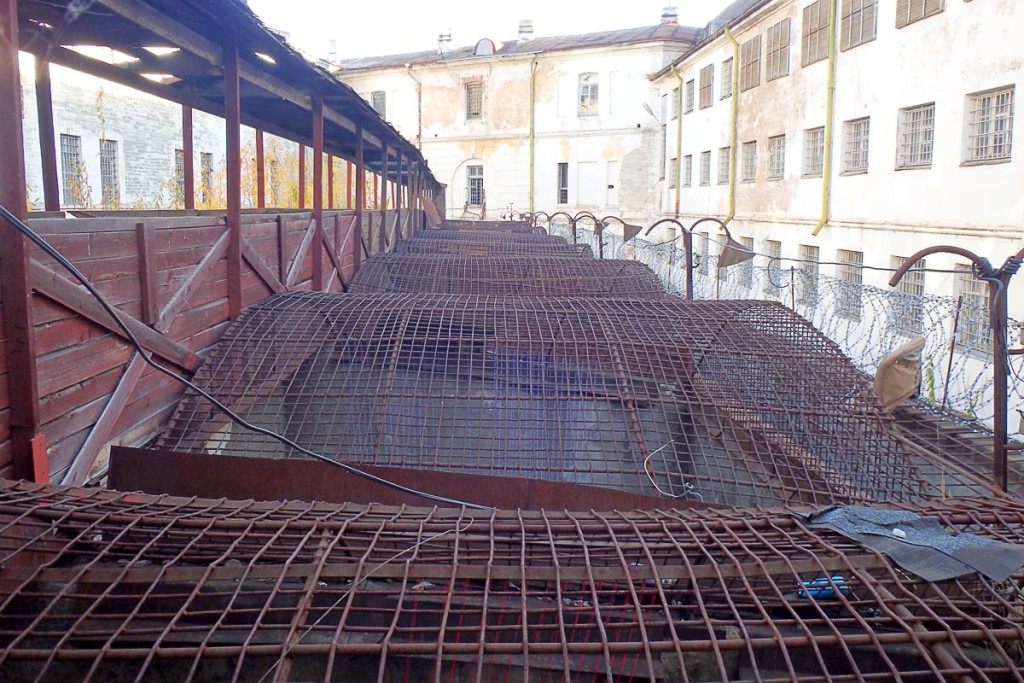
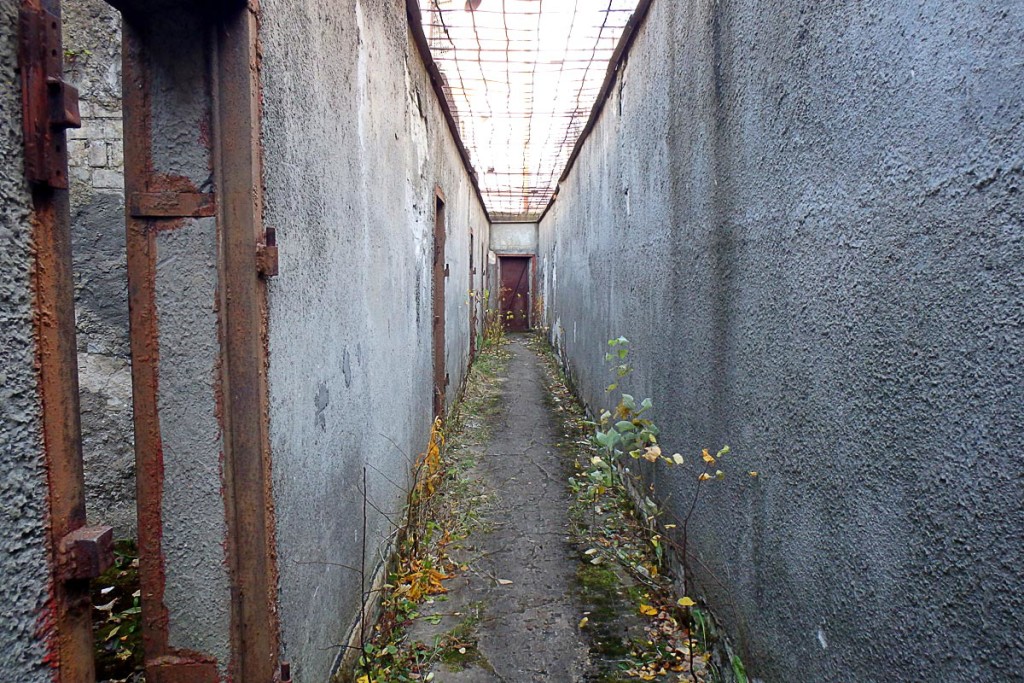
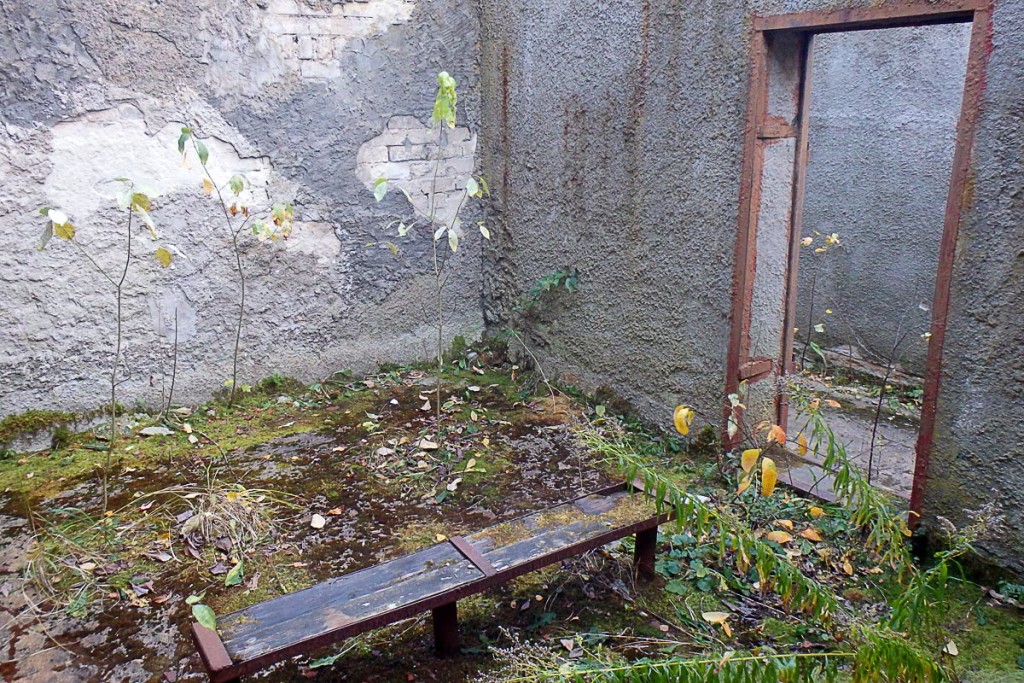
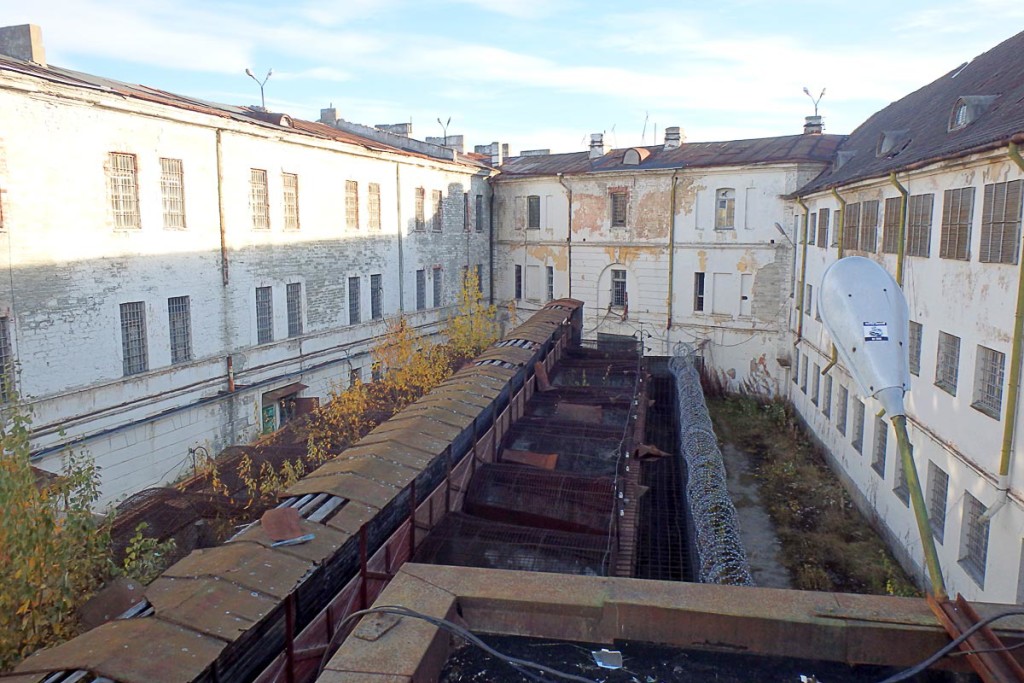
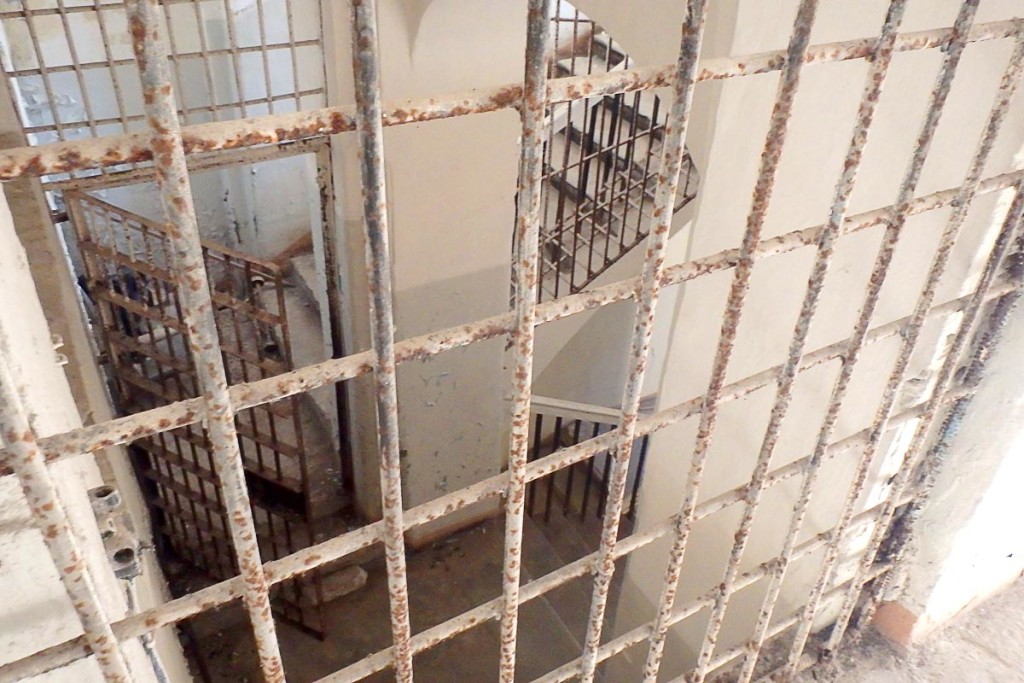
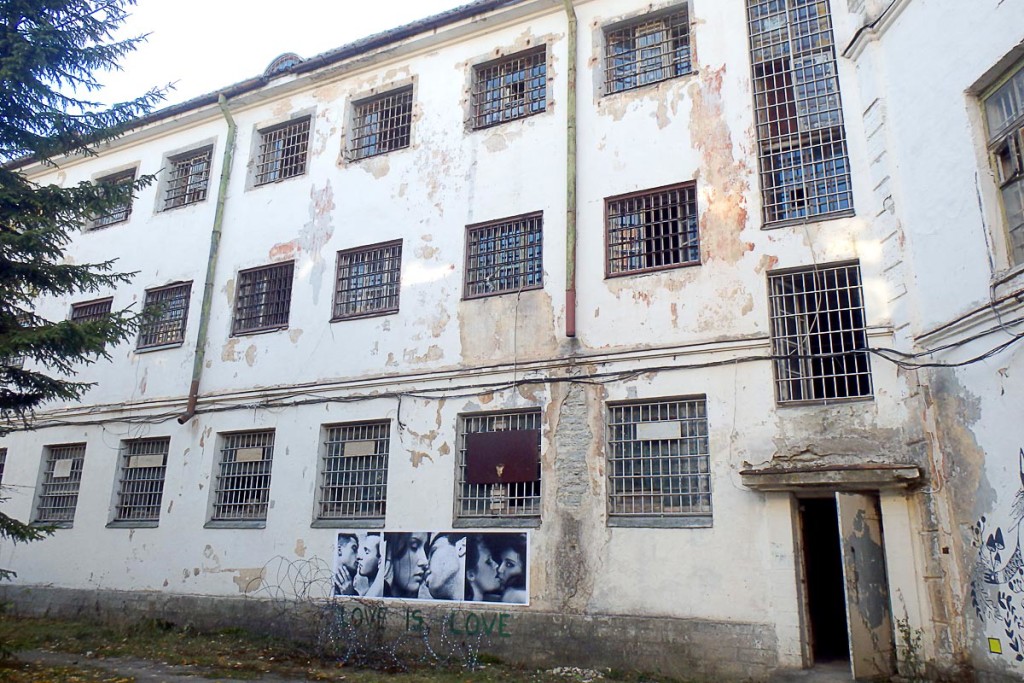
The place is overwhelming, but not really for the reasons you’d expect. It’s the desolation, the junk and dust, the incongruous yet apt demonstrations of creativity by local artists. The harsh iron and concrete environment contrasted with the vibrancy and life demonstrated by the very human art and graffiti. As other bloggers have pointed out, this can’t last forever; eventually it will be condemned and/or torn down. I don’t even know who is getting the admission money. But I’d call the place a must-see. It’s great, while it lasts.
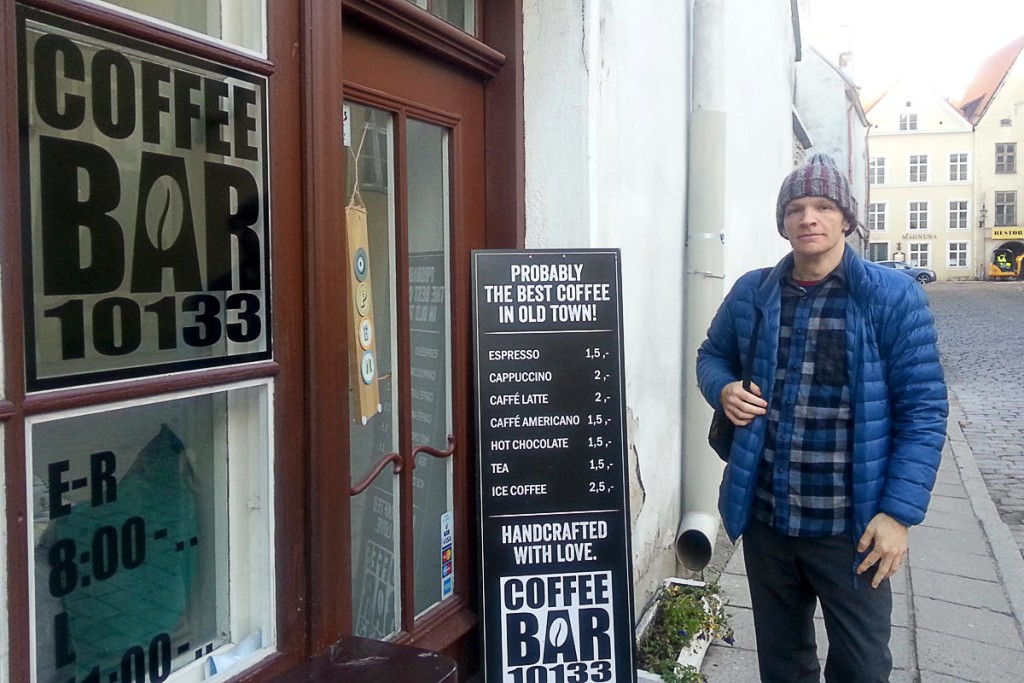
Back to the real world
After Patarei we wanted to relax and rest our legs. It had been a cold and long day for them already. We went back to Old Town and went to Coffee Bar 10133, advertising itself with restraint as “Probably The Best Coffee In Old Town!”
The coffee and pastries were indeed excellent. We chatted in English with the friendly owner; she said the cafe was pretty new and she had opened it with a friend of hers. Excitingly for me, they had a bunch of records in a corner (the record player was broken, she said, or I could have played one). They had a strange mix of stuff — Madonna, Black Sabbath, Beatles, Bon Jovi, Beethoven. The owner said she’d traveled to Edinburgh and records were really cheap there, but in Estonia they were expensive.
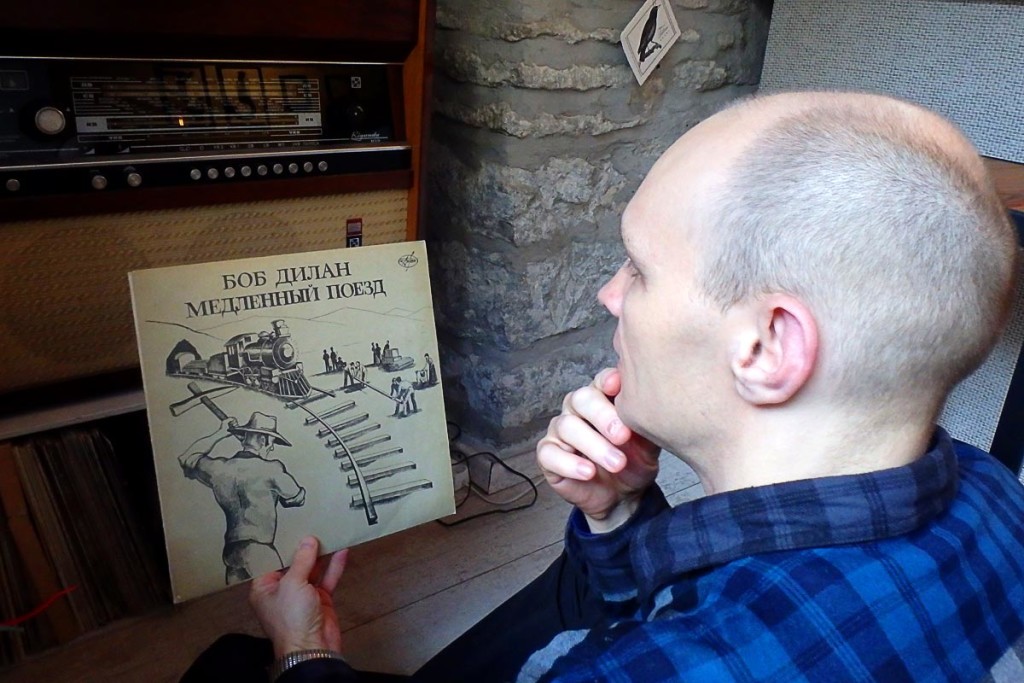
A Russian pressing of Bob Dylan’s Slow Train Coming.
On the way home we stopped at a doughnut shop we’d seen to get a couple to eat later, then we stopped by a vintage clothing shop. It was mostly women’s stuff but they had some good men’s coats.
However, my many layers felt good — I knew it was cold, but I felt fine. The multiple thin layers approach seems good, pain though it is to take everything off in the evening. Also, I take my insulin shots through three layers of clothing in my leg. Not cool but that’s how it is so far on this trip. It’s just easier, and these Bluff Works pants don’t stain if there’s blood.
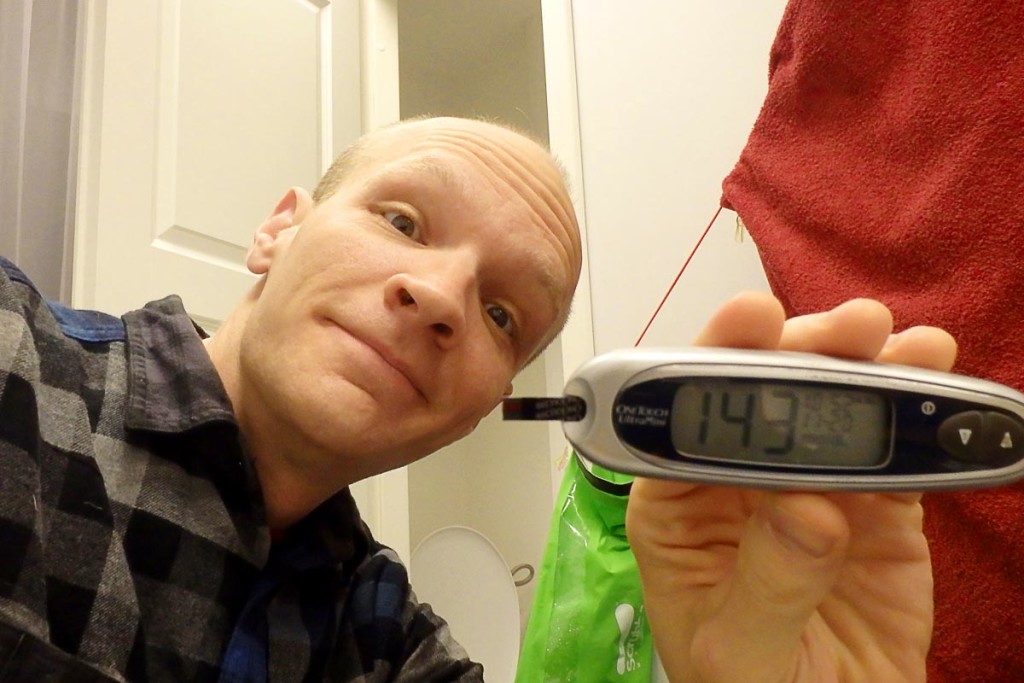
#bgnow 143 after getting home from Patarei.
Azerbaijani dinner
At the hotel my BG was 143 after all this walking around and pastry snacks. Old Russian prisons: good for diabetes. Who’d-a thunk it?
For dinner went to a restaurant near the hotel called Šeš Beš (pronounced “shesh besh”); it’s an Azerbaijani restaurant. I know we’re in Estonia, but why not? I’m not a culinary purist.
I had the assorted kebab plate with rice and a sparkling water. It was really good. I asked the waitress what the name of the restaurant meant — it means “six five” she said, and she showed me a pair of dice by way of explanation.
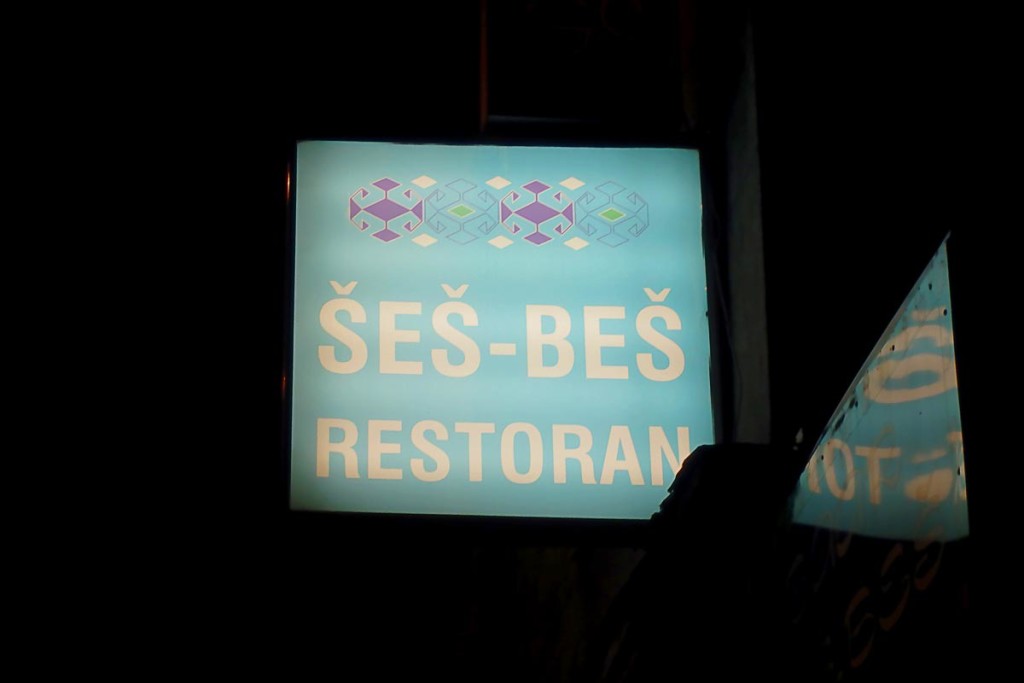
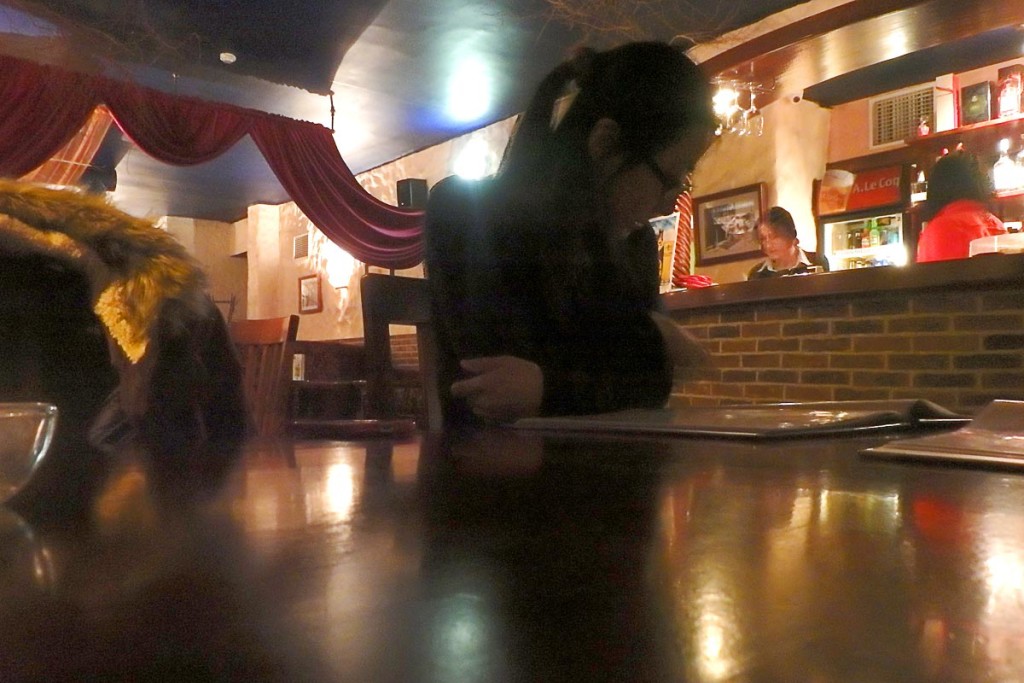
Masayo looks over the menu in atmospheric Šeš Beš.
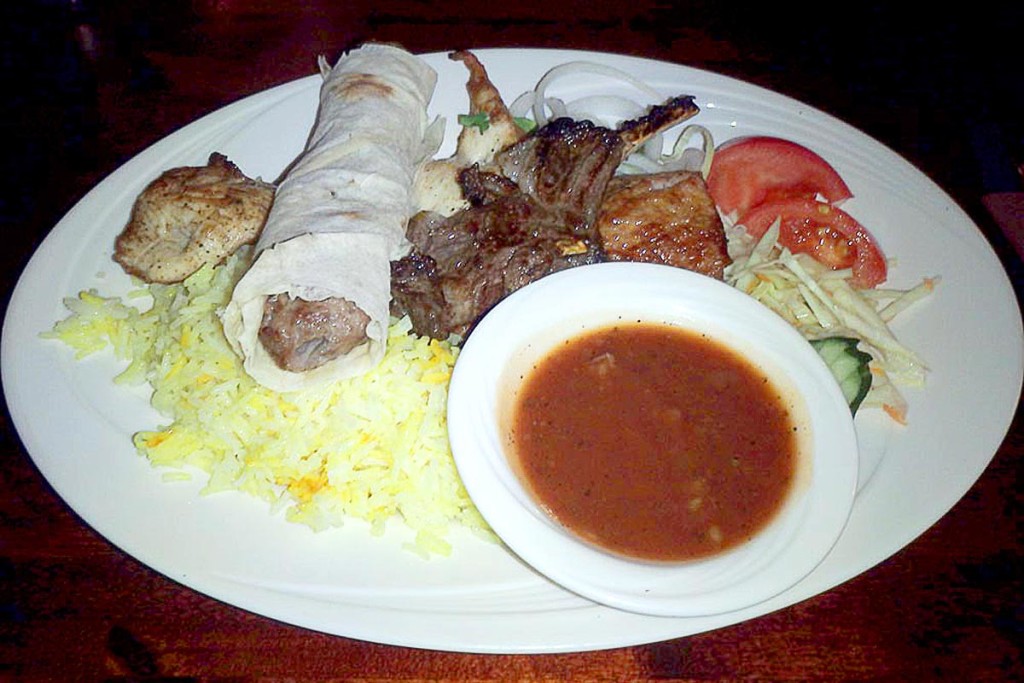
Afterwards we went home and I ate the doughnut I’d bought, but I took no extra insulin for it: I figured with all the walking I’d done today, I could slide by without it. I have this belief that any exercise, even low-level activity, can bring blood sugar down.
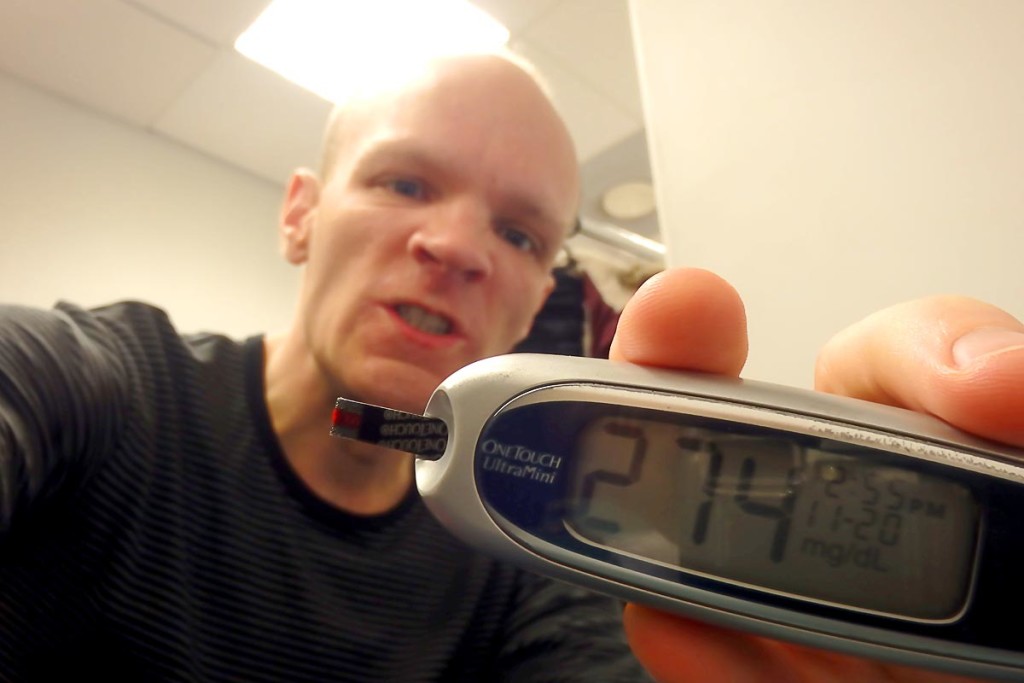
After Azerbaijani food (with rice) and an unscheduled doughnut. Serves me right.
Nope — I was 274 at 11:00 pm. More bad choices on my part: doughnut with no insulin, what was I thinking? I have to start giving walking around so much credit for lowering blood sugar. In some cases, sure, but a slow stroll around a prison, even for a couple hours, doesn’t have much effect. Especially when your body is used to walking around because you’re doing it frequently.
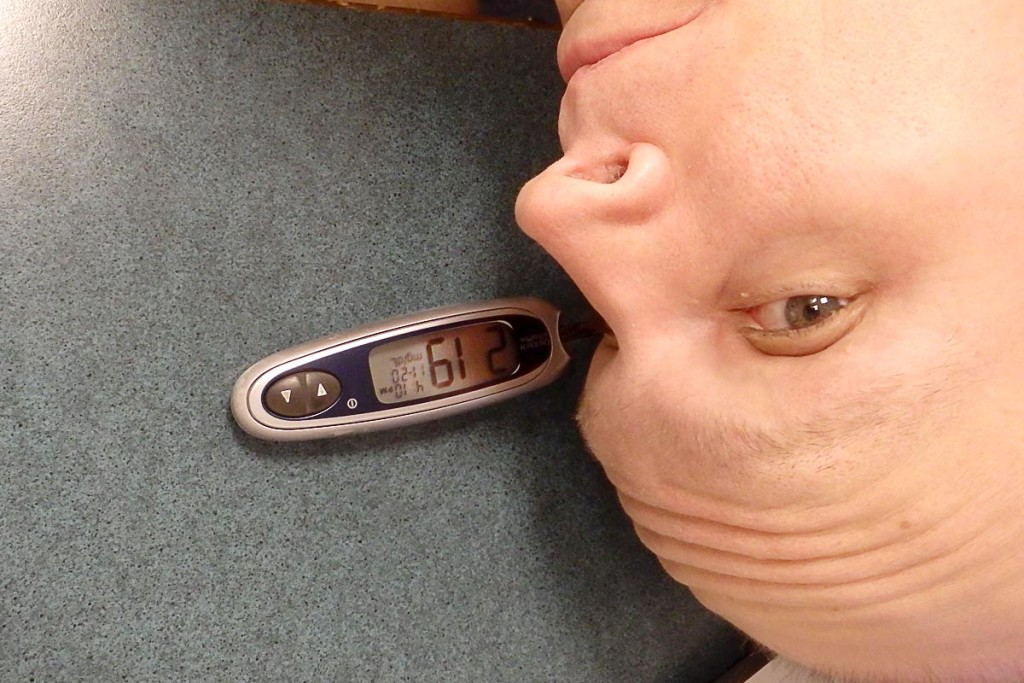
I took two corrective units of Humalog (plus my Lantus), but by 12:30 am my BG was still high at 219. I decided that was good enough and figured it’d keep coming down overnight and end up about where I want tomorrow morning. A diabetic gamble.
But overall, what a great and strange day in Tallinn. Patarei Prison and the bracingly cold and clear air of Tallinn were unforgettable. We both felt exhausted, but were glad we’d opted for an extra day in Tallinn. Tomorrow it’s off by bus to Tartu — Estonia’s second biggest city and the capital of the south.
Thanks for reading. Suggested:
- Share:
- Watch: Video on YouTube
- Read next: Day 9: Afternoon bus through Estonia to Tartu
- News: Newsletter (posted for free on Patreon every week)
- Support: Patreon (watch extended, ad-free videos and get other perks)

Support independent travel content
You can support my work via Patreon. Get early links to new videos, shout-outs in my videos, and other perks for as little as $1/month.
Your support helps me make more videos and bring you travels from interesting and lesser-known places. Join us! See details, perks, and support tiers at patreon.com/t1dwanderer. Thanks!
